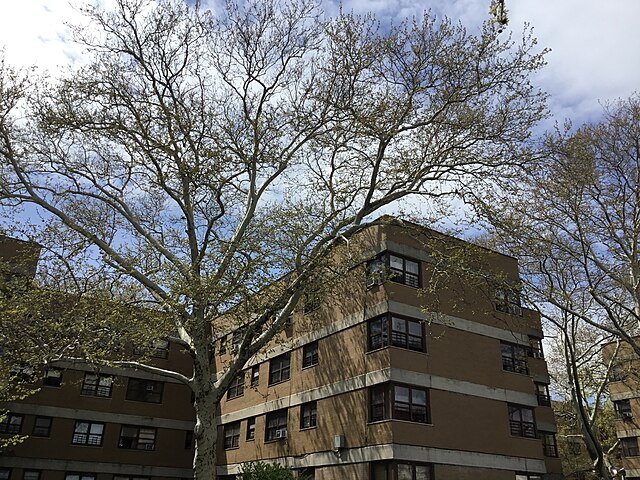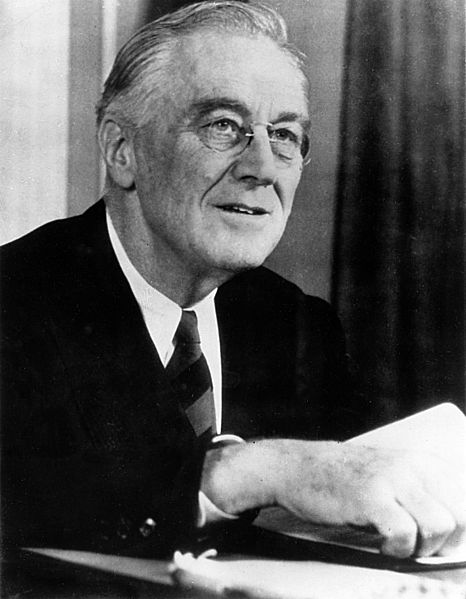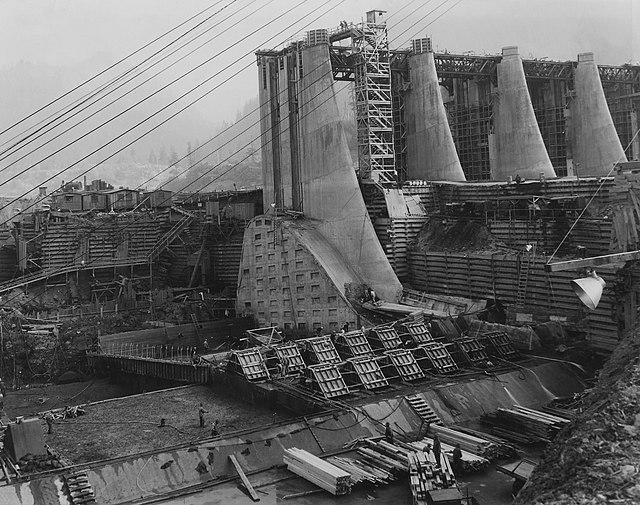Public Works Administration
The Public Works Administration (PWA), part of the New Deal of 1933, was a large-scale public works construction agency in the United States headed by Secretary of the Interior Harold L. Ickes. It was created by the National Industrial Recovery Act in June 1933 in response to the Great Depression. It built large-scale public works such as dams, bridges, hospitals, and schools. Its goals were to spend $3.3 billion in the first year, and $6 billion in all, to supply employment, stabilize buying power, and help revive the economy. Most of the spending came in two waves, one in 1933–1935 and another in 1938. Originally called the Federal Emergency Administration of Public Works, it was renamed the Public Works Administration in 1935 and shut down in 1944.
Federal Emergency Administration of Public Works project plaque in the Pine City, Minnesota, City Hall
Fort Peck Dam in Montana; spillway construction. One of the largest dams in the world, it continues to generate electricity. In July 1936, its construction employed 10,500 workers.
Williamsburg Houses as of April, 2022
Image of Yorktown Aircraft carrier
The New Deal was a series of programs, public work projects, financial reforms, and regulations enacted by President Franklin D. Roosevelt in the United States between 1933 and 1938. Major federal programs and agencies, including the Civilian Conservation Corps (CCC), the Works Progress Administration (WPA), the Civil Works Administration (CWA), the Farm Security Administration (FSA), the National Industrial Recovery Act of 1933 (NIRA) and the Social Security Administration (SSA), provided support for farmers, the unemployed, youth, and the elderly. The New Deal included new constraints and safeguards on the banking industry and efforts to re-inflate the economy after prices had fallen sharply. New Deal programs included both laws passed by Congress as well as presidential executive orders during the first term of the presidency of Franklin D. Roosevelt.

Top left: The TVA Act signed into law in 1933 Top right: President Franklin D. Roosevelt led the New Dealers; Bottom: A public mural from the arts program
1935 cartoon by Vaughn Shoemaker in which he parodied the New Deal as a card game with alphabetical agencies
Roosevelt's ebullient public personality, conveyed through his declaration that "the only thing we have to fear is fear itself" and his "fireside chats" on the radio did a great deal to help restore the nation's confidence
Public Works Administration Project Bonneville Dam








